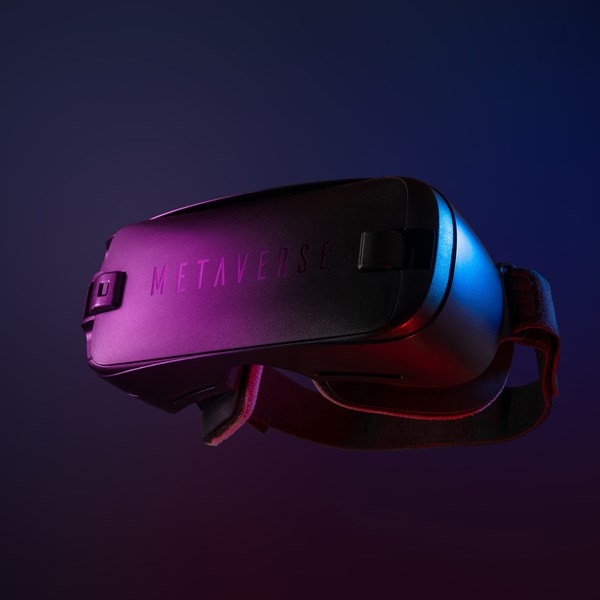It is no exaggeration to say the artificial intelligence (AI) revolution is already upon us with the World Economic Forum attributing the Fourth Industrial Revolution to the growth and consolidation of technologies such as AI, machine learning, deep learning and the Internet of Things (IoT).
AI has impacted almost all industries, including healthcare, education, finance, retail & e-commerce, and gaming & entertainment. There appears to be little signs of slowing down with the growth in innovation evident not only in the product and service offerings available in the marketplace for consumers, but also in the world of intellectual property.
HOW HAS AI AFFECTED TRADE MARK FILINGS?
There has been a clear and steady increase in the number of new UK and EU trade mark filings including the term ‘artificial intelligence’ in the class coverage of applications between 2017 (from 1,947) to 2021 (7,122), albeit a fairly even number of new filings over that same period incorporating ‘AI’ in the trade mark itself (141 - 2017, 286 - 2018, 258 - 2019, 288 - 2020 and 280 - 2021).
These factors appear to be generating the perfect storm where competitors vie for exclusivity over a given ‘AI’ trade mark in a sector that is getting more crowded by the year.
Disputes over ‘AI’ trade mark rights are therefore likely to increase as a result.
One method to try and avoid conflicts from the outset is to adopt an inventive and unique name for your brand. However, doing so can result in consumers simply not knowing what the product or service is or does, which can impact its emergence in an already congested market.
Given how competitive this area is, companies must consider their branding strategies for new products from the first inception of the brand. The challenge is being able to tread a fine line between educating the consumer as to the nature of the products or services whilst still making the brand distinctive.
However, you need to bear in mind naming a product or service in such a manner can lead to companies adopting a weaker brand. This can result in dispute after dispute as the company tries to police its trade mark and avoid dilution or encountering difficulties in enforcement as the scope of its rights are interpreted narrowly. It is a precarious line to walk, and a business needs to get the balance between evocation and descriptiveness right.
WHAT SHOULD YOU DO IF YOUR AI TRADE MARK IS DISPUTED?
If an ‘AI’ trade mark does encounter a third-party dispute, which is likely considering how crowded the sector is, it may not always spell the end of the line for a trade mark a business is wedded to. Most disputes are capable of being resolved by agreement, so the businesses involved can be spared the expensive and process involved in a formal dispute.
In most cases, it is possible to overcome objections or to find a suitable way forward, for example, by reaching a compromise with the opponent, perhaps allowing the parties to co-exist on a territorial basis or by agreeing on restrictions in the goods/services which each business offers. The options are too numerous to go into here - and each case must be looked at individually to find the best solution - but the following are some available options should you receive an objection or threat of opposition from a third party.
Restrictions
Is it possible to amend the identification of goods and services, including any exclusionary language, to distinguish between the nature or application of the AI products or services being offered by each party?
Limitations
Is it possible to limit the use of your trade mark, which may include undertakings to use your trade mark only under certain conditions (e.g., with your house mark)?
Undertakings
Is it possible to settle matters on the basis of an agreement not to expand into certain AI product lines/services or other territories?
Changes
Is it possible to change your trade mark, which might require filing a new application if the alterations are material, to negate any aural, visual or conceptual similarity between the parties’ trade marks?
Counterclaims
Is it possible to file revocation/invalidation actions against the third-party’s earlier registrations and/or to request proof of use in opposition/invalidation proceedings in order to undermine their enforceability and leverage your bargaining position?
Purchasing
Is it possible to purchase the third-party right to remove it as an obstacle?
So, don’t panic if you receive an objection from a third-party with intentions to stop you from using and/or registering your ‘AI’ trade mark!
Instead, be creative and explore ways and options for getting around the concerns which have been raised with your trade mark attorney. Also, do not ignore an objection or threat of opposition. If you do, it may indicate to the Registry or the third-party concerned that you have no interest in exploring options for finding an amicable solution.
If this blog raises any questions regarding either AI-related trade marks or protecting your trade marks in general, please contact Chris Baume today.







